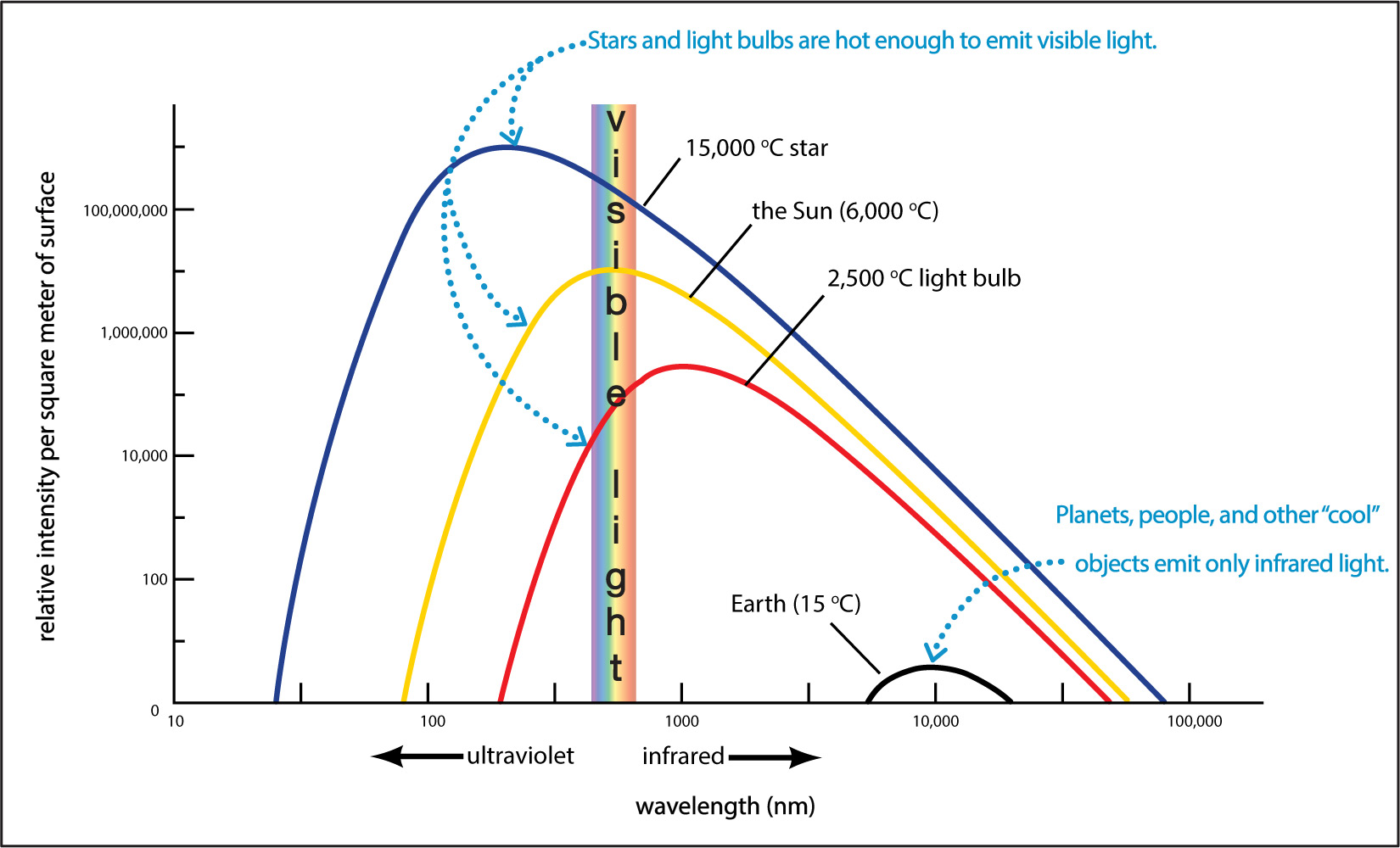Why do planets return energy to space as infrared light?
You can figure out that planets must return the energy that they absorb from the Sun back to space by thinking about what would happen if they didn’t. In that case, a planet would continue to absorb more and more energy without ever giving that energy up, which would cause the planet to warm up very quickly, like turning on an oven. This obviously doesn’t happen, so we know the planet must somehow return the absorbed energy to space.
However, you also know that while planets absorb energy primarily in the form of visible sunlight, they cannot be returning it to space in this same form. You know this because if planets were emitting visible light (meaning light that our eyes can see), then they’d shine with this light even on their night sides (the sides facing away from the Sun). If this were the case, then the ground here on Earth would glow in the dark, and it obviously doesn’t. The reason that planets don’t emit visible light has to do with temperature. (The visible light that we see from the sunlit side of planets is the light they reflect from the Sun, not light that they emit themselves.)
All objects emit light of a form that depends on their temperatures, with hotter objects emitting higher-energy light. In fact, as shown in Figure 1, scientists can use the form (spectrum) of light that an object emits to determine its temperature. For example, the Sun’s surface temperature of about 6,000°C explains why it emits visible light. Old-fashioned (or “incandescent”) light bulbs work the same way: Turning them on heats their metal filaments to over 2,500°C, which is hot enough that they also emit visible light.
Planetary surfaces, however, are so much cooler than the Sun or light bulb filaments that they cannot emit visible light. Instead, the emit only lower-energy light, and this is what infrared light is. Because they emit only infrared light, they must return the energy they absorb from visible sunlight back to space in this form.
Incidentally, this same idea explains why we can use infrared cameras to “see” people, animals, and other objects with “ordinary” temperatures (the kinds of temperatures we experience in daily life) in the dark. All of these objects have temperatures fairly similar to the surface temperatures of planets, which means they also emit infrared light that can be “seen” with infrared cameras.
